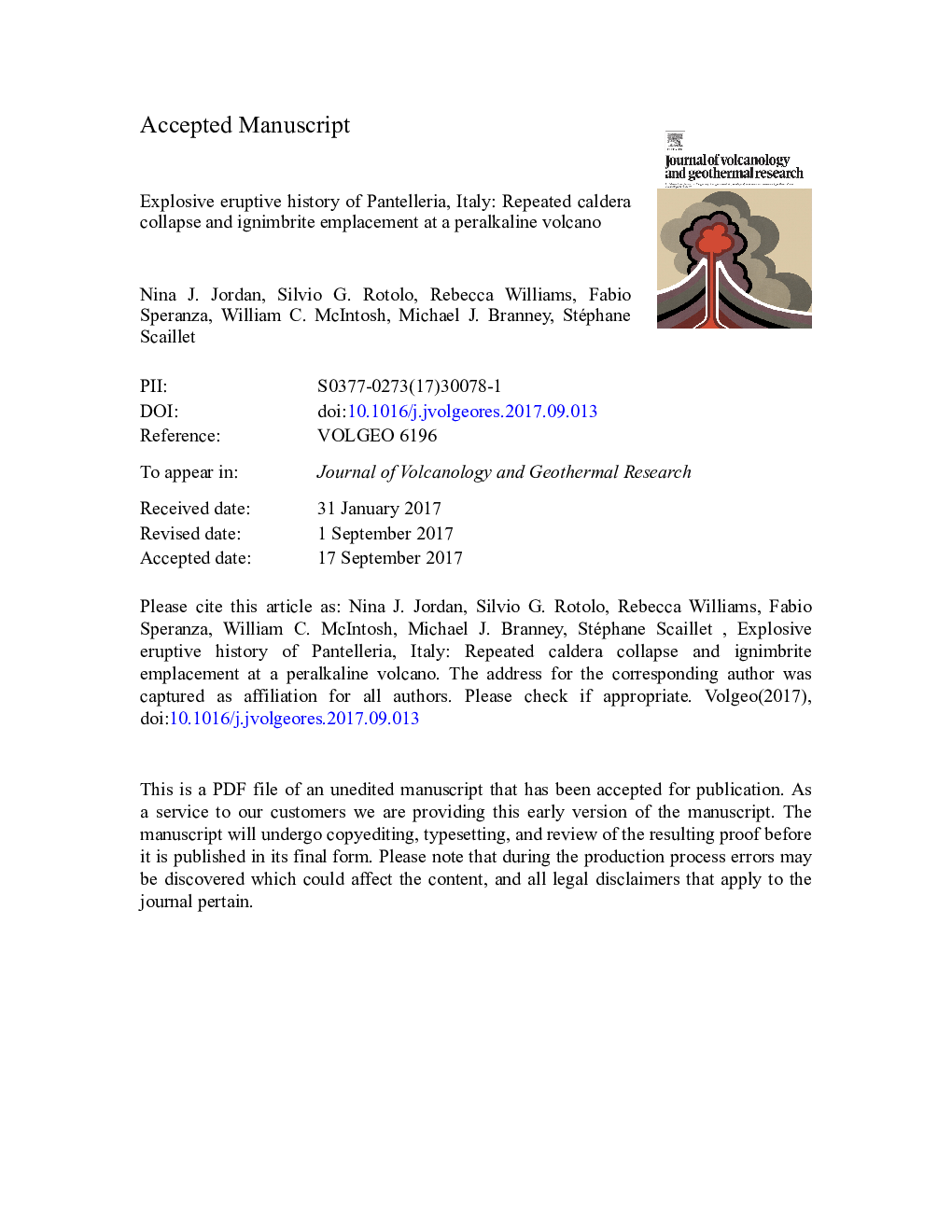| Article ID | Journal | Published Year | Pages | File Type |
|---|---|---|---|---|
| 8911416 | Journal of Volcanology and Geothermal Research | 2018 | 70 Pages |
Abstract
A new, pre-Green Tuff (46Â ka) volcanic stratigraphy is presented for the peralkaline Pantelleria Volcano, Italy. New 40Ar/39Ar and paleomagnetic data are combined with detailed field studies to develop a comprehensive stratigraphic reconstruction of the island. We find that the pre-46Â ka succession is characterised by eight silica-rich peralkaline (trachyte to pantellerite) ignimbrites, many of which blanketed the entire island. The ignimbrites are typically welded to rheomorphic, and are commonly associated with lithic breccias and/or pumice deposits. They record sustained radial pyroclastic density currents fed by low pyroclastic fountains. The onset of ignimbrite emplacement is typically preceded (more rarely followed) by pumice fallout with limited dispersal, and some eruptions lack any associated pumice fall deposit, suggesting the absence of tall eruption columns. Particular attention is given to the correlation of well-developed lithic breccias in the ignimbrites, interpreted as probable tracers of caldera collapses. They record as many as five caldera collapse events, in contrast to the two events reported to date. Inter-ignimbrite periods are characterised by explosive and effusive eruptions with limited dispersal, such as small pumice cones, as well as pedogenesis. These periods have similar characteristics as the current post-Green Tuff activity on the island, and, while not imminent, it is reasonable to postulate the occurrence of another ignimbrite-forming eruption sometime in the future.
Related Topics
Physical Sciences and Engineering
Earth and Planetary Sciences
Geochemistry and Petrology
Authors
Nina J. Jordan, Silvio G. Rotolo, Rebecca Williams, Fabio Speranza, William C. McIntosh, Michael J. Branney, Stéphane Scaillet,
